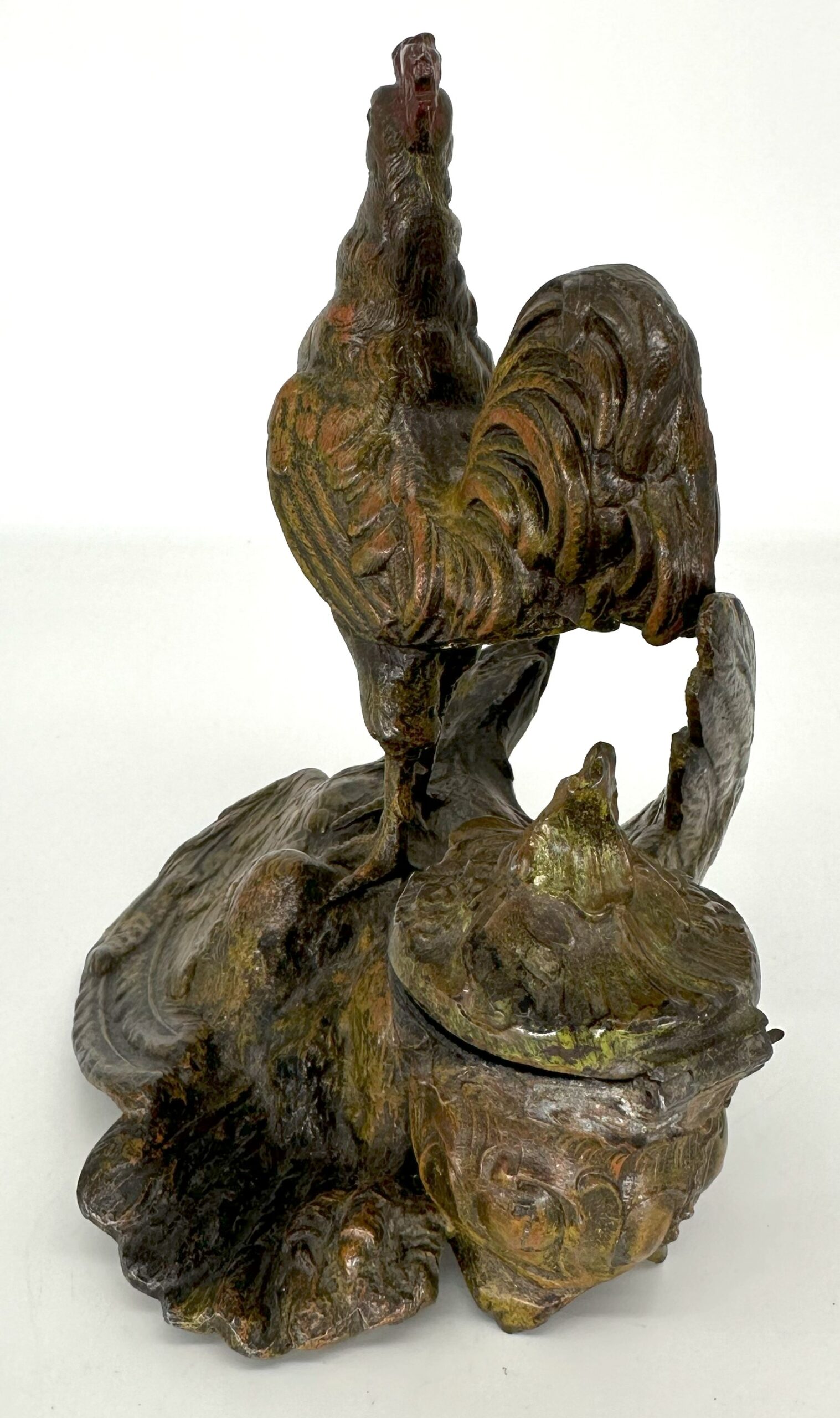
A Rooster Vanquishes an Eagle
| Categories | Figural - Animals & Living Creatures, Share Event |
| Type | Eagle, Military, Rooster |
| Material | Bronze finish |
| Markings | Unmarked |
| Manufacturer | Undetermined |
| Origin | France |
| Date or Era | circa 1880 |
| Measuring | 5 ¾” x 3 ¾” x 6 ½” high |
This is a historically significant inkstand that uses animal symbolism to convey a political message. The inkstand is a sculptural piece cast from spelter metal with a bronze-colored finish. It depicts a powerful tableau: a proud and defiant rooster (cockerel) stands triumphant, its beak open in a crow of victory. Underneath its feet lies a defeated eagle, its wings splayed in a posture of surrender. The eagle’s spread wing is specifically molded to serve as a pen tray. To the right of the rooster is an inkwell with an ornate, hinged lid with a finial, and inside, it contains a clear glass insert.
Historical Context and Dating
The symbolism of the rooster and eagle is central to understanding this piece’s origin. The rooster has been a national emblem of France, known as the Gallic rooster, since the Middle Ages, representing pride, courage, and vigilance. The eagle, particularly in this context, is the symbol of the Prussian and later German Empire.
The symbolism is complicated by the outcome of the Franco-Prussian War of 1870-1871. Here’s a brief history of that conflict:
- The war was a devastating defeat for France. The peace treaty resulted in the unification of Germany into a new German Empire and the ceding of the French territories of Alsace and Lorraine to Germany.
This is where the inkstand’s message becomes clear. The victorious rooster is not celebrating a historical victory but rather serving as a piece of defiant French propaganda created after their devastating loss. In the decades following the 1870 war, French nationalism was intense, and there was a widespread desire for revenge and the recovery of the lost territories. An inkstand like this would have been a perfect expression of that sentiment—a daily reminder to the owner of the enduring spirit of France and the hope for future victory, even in the face of recent humiliation.
The style of the piece is very much in line with the late 19th century. Spelter, a material often used to create a look like bronze at a lower cost, was popular for such decorative and patriotic items during this era.
Estimated value: $150
Content disclaimer. The information posted is the owner’s best knowledge and may not have been vetted by the SOIC. We welcome comments, corrections, and additions, working to make our website information comprehensive and accurate.
Join the Society of Inkwell Collectors (SOIC) – it’s free!
Founded in 1981 as a non-profit organization,
we are documenting inkwells (and accessories).
We’re here to help and inform!














